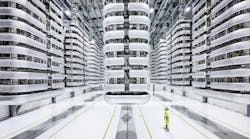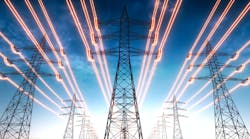There are few technologies more ubiquitous than the iPhone. Apple estimates that roughly 700 million people around the world use an iPhone and if you’ve ever walked around a major city that’s easy to believe. Every other person is glued to their screen.
But there’s a technology that’s on track to affect even more people and chances are you’ve never heard of it. It’s not something you can see or hold in your hands, it’s more like a hidden dance, and it’s going to impact your life over the next decade. That technology: High Voltage Direct Current. This technology moves energy, like a choreographed dance, from one place to another.
HVDC is the missing link in widespread use of renewable energy. Fossil fuels can be moved anywhere. If more people move into a region and energy demand increases, it’s expensive, but not impossible to build a new natural gas plant.
But renewable energy is different. Solar energy needs a sunny climate. Wind power only works where there’s lots of wind and hydro power requires fast moving water.
That severely limits the ability of renewable energy to widely proliferate — and the world is going to need more renewable power over the next 25 years. By 2040, we will need 48 percent more energy to satisfy demand, according to the U.S. Energy Information Administration.
Much of that demand will be from developing nations. Today, too much economic and personal growth is being hampered by insufficient power. But HVDC could help efficiently move energy from distant generation sources to places that desperately need it but can’t afford to build new power stations. By helping entrepreneurs with reliable energy and giving families consistent power to have light at night and working appliances, life will become much easier in these areas unleashing amazing amounts of what today is pent up potential.
It will be difficult to reach those levels by relying solely on fossil fuels. We know we need to harness renewable energy sources. In fact, over the next 5 years alone, the largest single source of electricity growth will come from renewables (rising to a 26% share of global generation).
So how do you get renewables to places that aren’t a natural fit for one of those power sources? And even if you’re lucky enough to live somewhere sunny like Los Angeles you’ll still need other sources of power. In LA, there are of course, some rainy days and at night, the sun doesn’t shine at all. The only way to make renewables a feasible replacement for fossil fuels is to find a way to move their energy from one region to another.
Enter HVDC. High Voltage Direct Current makes it possible to move renewable energy over long distances. Currently, the majority of power grids use AC (alternating current) which moves electricity in a wave-like motion. This is useful because most of today’s consumption devices use AC, but you can’t efficiently move this form of electricity over extremely long distances.
HVDC solves this problem by moving the electricity in a direct current (DC) at a constant voltage which is easier on the conductor and requires less space. With HVDC, energy companies can transport up to 3 times more electricity on conventional HV lines while reducing energy losses.
The keys to making the HVDC transmission system work are the converter stations at the beginning and end of each line. At the beginning, the convertor changes the incoming AC to DC and at the other end, it switches it back. That way the electricity is in the form of an alternating current when it gets to your home but it travels there as a fast moving, more efficient direct current.
GE is supplying those converters to a growing number of renewable projects around the world. In Germany, the DolWin3 offshore wind farm is using HVDC to move energy over 100 miles from the North Sea to the German town of Dörpen. A GE converter on the ocean platform transforms the wind energy from AC to DC to move it through subsea HVDC cables. The plant will generate 900 megawatts of power at peak output — enough to power 1 million homes.
In India, almost half a billion people will soon have more reliable energy thanks to an HVDC project in the central-eastern town of Champa. The project uses thermal power and transmits it over 1,365 km of HVDC lines to Kuruksherta in the north where an estimated 46 percent of the Indian population lives.
In Brazil, GE converters are helping to move hydro-generated power over the longest HVDC line in the world — 2,375 km. The project will move energy from the Madeira River to the south-east region of the country which has the highest electricity consumption in Brazil.
HVDC is even starting to pop up in America. Tiny Hannibal, Missouri, (population 18,000) is best known as the birthplace of author Mark Twain. Last month, Hannibal voted to purchase 20 percent of its electricity from wind farms in Kansas. That energy will able to flow hundreds of miles thanks to Clean Line Energy’s HVDC lines.
Energy moves like a choreographed dance. It needs all the performers — generation, transmission, even consumption— working together for the dance to flow smoothly. Thanks to HVDC, this dance is spreading to all parts of the world and renewable energy is becoming an increasingly important player.


